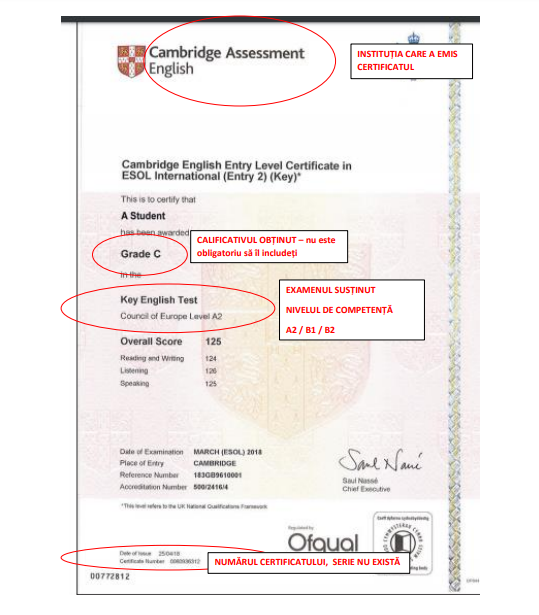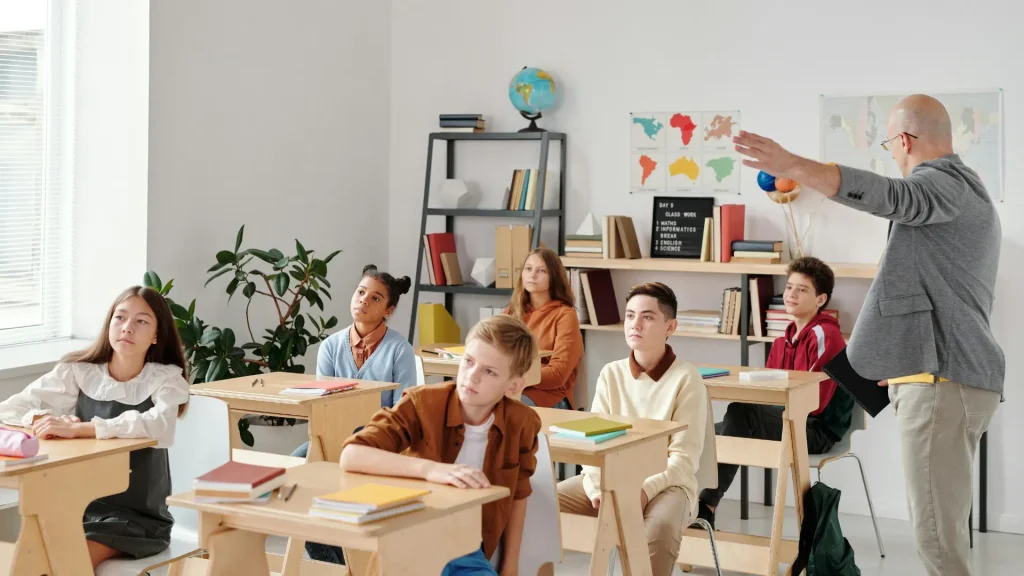Maria Vaschiu
Abstract: The aim of my thesis is to demonstrate that intercultural competence is a key component of education, particularly of foreign language teaching. In classroom practice, particularly in textbook choice, teachers need to critically analyse the cultural-content of activities so as to meet the needs of the learners, of the institution and of the larger society. For instance, in Romanian state education, the above-mentioned issues are clearly illustrated in the adapted textbook which will be analysed – Right On 1– which clearly shows how language learning is integrated with learning of values relevant to the Romanian context.
1 Theoretical framework
1.1 Why should we teach intercultural competence?
Intercultural competence has become an important educational end because of the far-reaching effects this issue may have in the long run for the increasingly multicultural societies we are living in. It is generally agreed that education aims at developing fully functional individuals, which is why language courses should be designed according to learners` needs in a contemporary society where intercultural skills seem to be greatly valued in a wide range of areas. The present research focuses on a theoretical framework on teaching interculturality in the first part, then more practical matters are put forward about teaching English as a foreign language in the Romanian context, particularly in how teachers could approach intercultural competence in this context and how resources help them in the process. The efforts will be directed towards properly understanding the need to critically examine materials considering their possible inappropriateness for local contexts.
In the recent past, intercultural competence has been a matter of concern for a broad range of groups, be them teachers, students, diplomats, employees or employers. Nowadays, particularly in the modern urban society of the 21st century, intercultural competence seems to be a „must” for a successful career. Intercultural competence stands for a range of skills that help us effectively communicate with people from other cultures. Modern communities are increasingly multicultural, and, at the same time, challenging, in the sense that constructive dialogue has become the only way to successfully adapt. Theoretically, education should be based on societal needs. That is why intercultural competence has become an important educational end.
1.2 Methodological appropriateness
The question arises whether the trend of adopting communicative approaches is beneficial in this respect. Kramsch points out that „if language is seen as social practice, culture becomes the very core of language teaching” (Context and Culture 8), arguing that cultural awareness enables language proficiency, and it cannot be separated from other language skills, since it is a feature of language itself. Communication-based methods (such as Communicative Language Teaching, Task-Based Instruction, Content-Based Instruction) make social practice and meaning-making their central focus (Larsen-Freeman). The shift of perspective is clearly towards learner- and learning-centred methods which provide plenty of opportunities to discuss cultural aspects. As we might infer, the key words for developing appropriate methodology for intercultural purposes are meaning, context, content, task, participation, interaction. Such methodologies have been the focus of the last decades, changing patterns of classroom interaction and shifting the point of focus on the learners and their needs.
Besides methods, models of intercultural learning have clearly encouraged teachers to bring meaningfulness inside their classrooms in order to teach intercultural competence. One such model is proposed by Liddiecoat and Scarino (2013), as it can be observed in Figure 1.

Figure 1. Processes of intercultural learning. Source: Liddiecoat A. J. and Scarino A. Intercultural Language Teaching and Learning. Malden: Blackwell Publishing, 2013. (60)
Figure 1. Processes of intercultural learning. Source: Liddiecoat A. J. and Scarino A. Intercultural Language Teaching and Learning. Malden: Blackwell Publishing, 2013. (60)
Scarino, A. and Liddicoat, A. J. illustrate the practice of intercultural learning as a „cycle of interconnected processes” (59). They describe the processes of noticing, comparing, reflecting and interacting as interdependent processes that determine learners to truly engage in intercultural activities. This chapter will focus on describing this model considering its usefulness in analysing and putting in practice culture-based activities in English language teaching. The authors mention that there is no pre-established order when it comes to starting with a process, still the noticing process might be the first move given its role in triggering awareness. (60) The inevitable and perhaps unconscious step that immediately follows is comparing: learners inevitably draw on their previous experience of native culture (or on previous information they collected about the target culture) and contrast it to the new cultural aspects, considering similarities and differences. Comparing paves the way to reflecting as „a way of making sense of experience and understanding the experience from multiple possible perspectives” (Liddicoat and Scarino 61). It can be argued that noticing and comparing are surface processes, to a certain extent automatic and made explicit to learners, whereas the teacher plays a significant role in the attempt to engage students in the `intercultural` by focusing on the last two processes: reflection and interaction. Whereas noticing, comparing and reflecting focus on learners becoming aware and having knowledge of cultural aspects, the last process – interaction – brings forth the practical implications of interculturalism in language learning. The authors of the intercultural model point out the importance of this process for learners` „active engagement with diversity” (61).[1] Such a perspective tends to give more autonomy to the learner in reorganising information, adding new information, and expressing themselves more creatively. How might learners truly interact in an intercultural manner? Whereas second language learners often have plenty of opportunities to do so in the immediate surroundings, foreign language learners have no other way than making the most of what the classroom environment has to offer. That is to say, the teacher`s approach and the textbook as a resource become the leading factors in the strategic plan for displaying and mastering intercultural skills.
However, we might need to go beyond methods and models to create a culture-sensitive approach to language teaching. Such an approach has been illustrated as consisting in two components: „a teaching methodology and a process of learning about the classroom.” (Holliday 162).[2] Not only should the teacher be informed of the diversity of teaching methods, but he/she should be practising them in agreement with the needs of their students. Trends come and go, yet teachers remain responsible for how they implement theories in the language classroom, by taking on the „ideal” role of what Kumaravadivelu names „reflective practitioners”. It is important to note that culture is one of the crucial aspects that supports the above-mentioned idea, since a postmethod pedagogy (as named by Kumaradivelu) entails three major dimensions: particularity (adaptation to particular groups), practicality (teachers both theorize and practice) and possibility (focus on the sociopolitical consciousness of learners) (37)[3]. Thus, teachers might need to go beyond methods and reflect on the characteristics of each group, mainly on their peculiar culture, in order to adapt materials, explore techniques or take any decisions related to lesson planning. The old days (not necessarily as „good” as the saying goes) in which teachers were closely following textbooks are no longer valid, since adapting, analyzing, reflecting on classroom action have proved much more productive in the long run.
1.3 Textbooks as resources for intercultural learning
Teachers of English as a foreign language are in the fortunate position of disposing of a great variety of resources for their classroom practice. Movies, press articles, literature, visual aids, textbooks, and even practical texts such as menus etc. are the aids likely to familiarise students with cultural diversity. English teachers worlwide have access to a wide range of textbooks written by native speakers of English, conveying less-edited content, often considered to be more „authentic” and perhaps more reliable. Textbooks are still the traditional resources teachers resort to because of their effective organisation. The question arises whether adapted textbooks are more appropriate for a certain context and why. On one hand, adapted textbooks are said to be based on learner needs, they provide explicit references to the local culture which might help Ss draw on previous experience (therefore become more autonomous) and might value thus both target and local habits and beliefs. On the other hand, international textbooks are mainly proficiency-oriented, and at the same time produced by native speakers, and possibly illustrating to a greater extent authenticity of the foreign culture. The greater validity that is sometimes offered to international textbooks might have also sprung from the idea that „resources are not just language samples – they are also cultural products” (Liddicoat and Scarino 83), in the sense that the cultural context in which they are created takes its toll on the cultural content by engulfing their writers` worldviews and identities. Teachers have an important role in textbook choice since they have to relate their pedagogy to wider social issues and choose resources according to the educational ends of their institution.
2 Teaching intercultural skills in the EFL classroom in the Romanian context
Moving on to more practical matters, wider social issues that English teachers in Romanian state education should consider in their language teaching will be approached. The national curriculum has to be mentioned here, since it is a regulatory document that provides guidelines for teaching in a particular context and that teachers involved in state education are required to follow. Looking at some relevant aspects that we find in the syllabus designed for lower secondary school might help us gain an insight into how intercultural competence is embedded in education policies. First of all, the syllabus is aligned with the Common European Framework of Reference and it is based on the reccomendation of the European Parliament for key competences for lifelong learning. Therefore, it suggests the importance of developing the plurilingual and pluricultural competence[4]. In this respect, the government-regulated syllabus underlines the importance of integration, by means of „opening towards both inter- and trans-disciplinary approaches within a curriculum domain” (my translation, MEN 2)[5]. The emphasis is also on the consideration that the curriculum „does not end with leaving school, but continues in some way or other thereafter in a process of life-long learning” (174)[6]. It is important to note that the Romanian national curriculum for lower secondary school is currently undergoing a change of perspective[7]; the process started in 2017 and it will gradually be adopted by the year 2021. This research will mainly tackle the former version (which is still a document in force for the 7th and 8th grades), referring to the updated curriculum whenever it is necessary. The question arises how the syllabus renders intercultural competence and what suggestions of implementation are put forward, if any. A correlation is explicitly drawn from European key competences to the general competences for Romanian lower secondary school – in Romanian terms, intercultural skills become the section entitled „Valori si atitudini” (Values and atitudes) (MEN 5). This section (see appendix 1) provides, besides other civic values, plenty of references to intercultural communication, some of the most significant and relevant to the topic at hand being: accepting differences and showing tolerance through a critical approach to cultural stereotypes, showing curiosity for habits, traditions, socio-cultural or geographical aspects of other cultures (or more specifically the anglo-saxon culture) and developing learners` interest for such aspects.
2.1 Textbook analysis – the role of context-sensitive materials
In what concerns textbook analysis, the question arises whether locally-adapted textbooks are more appropriate to teaching intercultural competence and why. Right on 1 might be a good example of how teaching intercultural competence is facilitated by an adapted textbook designed so as to meet the needs of 5th graders who are studying English as a first modern language. From the first pages, it is mentioned that it is the property of MEN and that it is designed according to the syllabus for foreign languages. The Content section (appendix 2) is revealing contextual peculiarities of the target learner group. The right-sided frame draws our attention by means of the shortcuts it provides for Culture spots and Values. Some of these activities provide explicit cultural references for both local and foreign culture. The „Culture Spot” is particularly focused on British culture, bringing forth typical sports, dishes, superheroes, landmarks. It is important to note that after each culture spot in mentioned throughout the textbook, the task imediatelly following requires students to draw on their cultural background and think about typical cultural aspects in their own country. Some activities are focused also on fostering values (national pride, family, celebrations, etc) which are derived from the broad aims stated in the national curriculum and here the home culture is made explicit.
Examples of how learning activities might value the customs of the local culture, besides providing knowledge and raising awareness of the target culture, can be encountered in Right on, where there are plenty of references to the local culture. The example which will be analysed (see appendix 3) is part of the cross-curricular section (CLIL) and aims at developing citizenship values. The activity relates to an issue of interest for students, namely school rules, and it is integrated with reading, writing and vocabulary practice. The input text suggests the idea of crossing borders, by means of the main character: Sabina, a girl from Romania who studies in England. It facilitates cultural awareness by its reference to uniforms (which are required by the majority of schools in England), the packed lunch, the bullying problem and it encourages reflection by the discussion following the text. Such an activity might be analysed considering the model of intercultural learning based on the four interdependent processes: noticing, comparing, reflecting, interacting. Students get the opportunity to learn about school rules in England, then to compare them to school rules in Romania, whereas reflection is facilitated by the discussion about school uniforms and whether they are used in both school systems. In other words, they get the chance to draw on their previous experience and express whether they would have liked to have these types of rules or not. The final task, which illustrates the note-taking format, creates the appropriate environment for students to interact with each other and with cultural aspects: the activity could be organised in such a way that they work in groups/pairs and negotiate/explore meanings about their experiences. The activity values the customs and beliefs of both the target and the local culture, proving the attempt of the authors to sensitively approach the local context.
Even if the above-discussed activity seems to be an example of a successful interculturally-enlightening activity, it is important to critically analyse the cutural content of activities teachers find in various resources. It would seem obvious that locally relevant content is perfectly fine as long as it is used to raise awareness of differences and similarities, promote respect for different worldviews and to understand the other by means of oneself . However, if it is used to avoid any discomfort created by different perspectives or to match students expectations, it might be useless from an intercultural perspective.
In conclusion, context-appropriateness is a requirement in state education for the sake of societal needs. Materials that are sensitive to the local context are likely to facilitate intercultural learning, if appropriately used so as to engage learners with diversity. However, teachers should beware of striking a balance- by detecting and adapting culturally inappropriate materials (intended for other student groups – possibly not matching the educational ends of their institution) and locally-adapted materials that superficially engage learners. After all, the textbook is only a support for teaching and the teacher is allowed to adjust it for classroom needs.
Works cited
- Brown, Douglas. Principles of Language Learning and Teaching. London: Pearson Longman, 2007.
- Council of Europe. Common European Framework of Reference for Languages: Learning, Teaching, Assessment. Cambridge: Cambridge University Press, 2001.
- Dooley, Jenny. Right on! Limba moderna 1 – Limba Engleza. Clasa a V-a. Express Publishing, Uniscan Grup Educational.
- Holliday, Adrian. Appropriate methodology and social context. Cambridge: Cambridge University Press, 1994.
- Kramsch, Claire. Context and Culture in Language Teaching. Oxford: Oxford University Press, 1993.
- Kumaravadivelu, B. Beyond Methods: Macrostrategies for Language Teaching. New Haven: Yale University Press, 2003.
- Larsen-Freeman, Diane. Techniques and Principles in Language Teaching. Oxford: Oxford University Press, 2000.
- Liddiecoat, A. J. and Scarino, A. Intercultural Language Teaching and Learning. Malden: Blackwell Publishing, 2013. Print.
- Ministerul Educatiei, Cercetarii si Inovarii. Anexa nr. 1 la ordinul ministrului educatiei, cercetarii si inovarii nr. 5097/09.09.2009. Programe Scolare. Limba Engleza. Clasele a V-a – a VIII-a. Limba moderna 1. Bucuresti, 2009.
Appendix 1

Appendix 2

Appendix 3







































